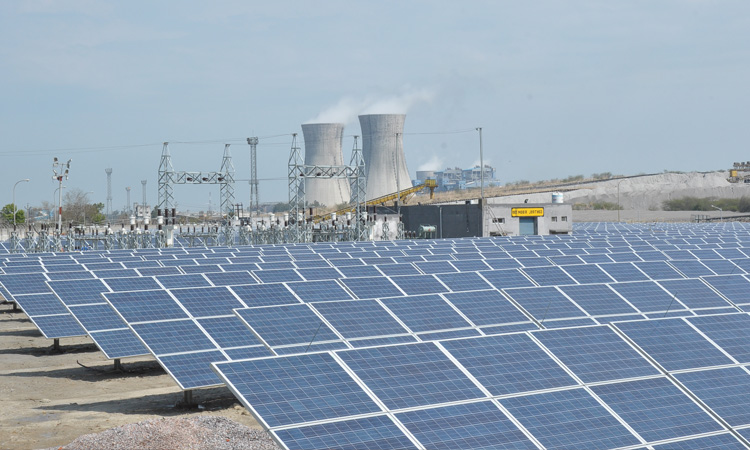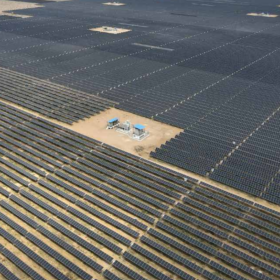Chhattisgarh’s energy sector received more than INR 16,672 crore in government support in FY2024 but subsidies and investments for fossil fuels were four times higher than those for renewable energy, finds a new report that urges the state to diversify its support toward clean energy to safeguard its economy and communities.
The analysis by the International Institute for Sustainable Development and Swaniti Initiative, Mapping India’s State-Level Energy Transition: Chhattisgarh, shows that of the total support, INR 12,648 crore ($1.5 billion) came in the form of subsidies, while public sector undertakings invested INR 4,024 crore ($465 million). Coal received the largest share of all quantified subsidies (26%), while renewable energy accounted for only 8% of support.
At the same time, energy-related revenues in Chhattisgarh reached INR 22,532 crore—22% of the state’s total revenues. In total, 80% of the energy-related revenues came from fossil fuels—38% from coal and 40% from oil and gas—leaving the state heavily exposed to shifts in future energy landscapes.
“Proactive fiscal planning has never been more important for Chhattisgarh,” said Shruti Sharma, Lead in Affordable Energy at IISD. “With nearly a quarter of state revenues tied to fossil fuels, diversifying energy resources and revenue streams is critical to protect jobs, secure long-term growth, and deliver on the state’s vision of Viksit Chhattisgarh 2047.”
With the state’s economy anchored in coal, the report outlines a roadmap for how Chhattisgarh can leverage its traditional energy strengths to lead a just and sustainable transition, safeguarding its economy and communities while aligning with India’s national clean energy goals.
The study found that Chhattisgarh, with just 2% of India’s population, provides a substantial share of the nation’s energy supply, producing over 21% of its fossil fuels and hosting 7% of its installed thermal power capacity. This presents a significant opportunity for the state to spearhead innovation and investment in the clean energy sector.
The authors of the report urge state and central governments to
- Align government support with net-zero targets by establishing clear milestones in Chhattisgarh’s Vision 2047 plan and partnering with NITI Aayog on a green-budgeting exercise.
- Better target electricity subsidies to low-income, low-consuming households and redirect savings into rooftop solar, solar pumps, small-scale wind, and repurposed thermal assets.
- Diversify revenue beyond coal, oil, and gas by enhancing production of minerals like iron ore, bauxite, and limestone, and align industrial development with the state’s long-term decarbonization goals.
- Establish a state-led coordination committee with key departments and stakeholders to design social support mechanisms for coal-dependent workers and communities, while collaborating with the Ministry of Coal and coal firm Southeastern Coalfields Limited to diversify operations, create alternative employment, and drive just transition planning.
Recognizing the need for just transition, particularly in older coal regions where resource exhaustion has already set in, the Swaniti Initiative also assessed the coal transition vulnerability of 52 districts in India through an index. The findings show that nearly 20 of the 52 districts show high levels of vulnerability. Of the six coal districts of Chhattisgarh, three are highly vulnerable.
“Chhattisgarh will be a high coal-producing state in the coming decade; however, some of its old regions, such as Chirimiri, where coal reserves have depleted, will need immediate planning. This can also serve as a blueprint for future just transition planning in districts which are currently producing big,” said Chinmayi Shalya, Senior Fellow, Swaniti Initiative.
The report recommends that Chhattisgarh proactively plan its energy transition, identifying significant areas where state budgeting can drive local economic growth, create jobs, and improve energy access for its people, while aligning with national policy objectives.
This content is protected by copyright and may not be reused. If you want to cooperate with us and would like to reuse some of our content, please contact: editors@pv-magazine.com.









By submitting this form you agree to pv magazine using your data for the purposes of publishing your comment.
Your personal data will only be disclosed or otherwise transmitted to third parties for the purposes of spam filtering or if this is necessary for technical maintenance of the website. Any other transfer to third parties will not take place unless this is justified on the basis of applicable data protection regulations or if pv magazine is legally obliged to do so.
You may revoke this consent at any time with effect for the future, in which case your personal data will be deleted immediately. Otherwise, your data will be deleted if pv magazine has processed your request or the purpose of data storage is fulfilled.
Further information on data privacy can be found in our Data Protection Policy.